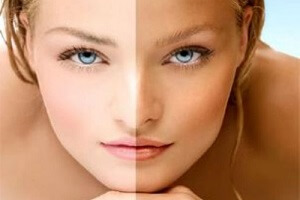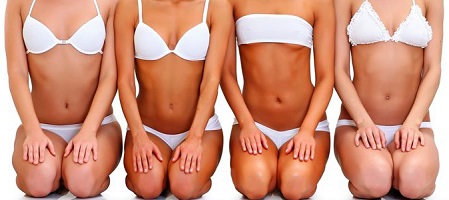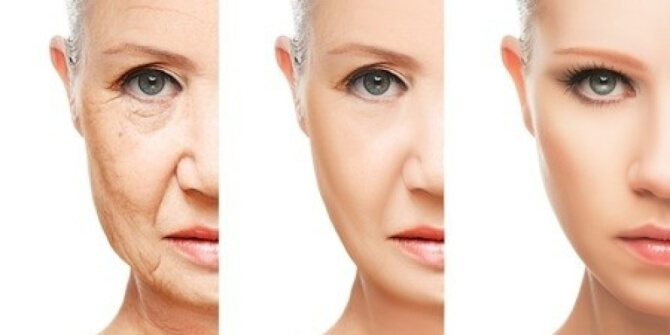Summer may feel like months away but soon the warmer weather will be upon us. Now is the time to prep your skin to be summer ready.
But before you venture out into the great outdoors, we are finding out whether tanning indoors is actually better for you. Read our guide to discover the facts about indoor tanning.
What are the different types of tanning on offer in salons?
Spray tans
Spray tan is a form of self-tanning where a fine mist is sprayed onto your body. This mist has an ingredient (Dihydroxyacetaone or DHA for short) that interacts with your own skin’s chemistry to make it tan or bronze.
This temporary effect generally lasts from 3-7 days and is completely safe for your skin, although doesn’t provide any protection against the sun’s rays.
The results you can get from tanning sprays are generally very good. Many celebrities and models prefer spray tanning to just about anything else to get the colour that they want.
Advantages
• Spray tanning means that you will become bronzed without the harmful effects of UV sun exposure. Too much exposure to the sun can lead to ageing skin and sunburn. Spray tans are safe for your skin.
• You will look and feel good. Looking bronzed means you will look healthier and glowing. Spray tans are great for a special occasion such as a wedding or if you just want to feel confident and tanned.
• Most salons offer spray tans that contain moisturising ingredients, which will stop your skin from becoming dry, as well as keeping it hydrated and fresh.
• Spray tanning dries quicker than many other tanning products on the market
Disadvantages
• It’s important to remember that having a spray tan doesn’t provide you with any SPF protection from the sun. Assuming that having a spray tan means your skin will be ready for the sun is completely false. Sun cream will need to be used with or without a spray tan.
• During spray tanning, the active ingredient DHA can be inadvertently inhaled. This inhalation can allow DHA to enter your bloodstream and potentially cause negative health effects.
• It can be an expensive beauty habit if it becomes part of your beauty routine weekly. Prices usually start at £25+ per tanning session.
Sunbeds and booths
Most salons have a variety of beds available with many packages to choose from:
Low pressure: This is the traditional sun bed. UV rays are emitted in a spectrum that is similar to natural sunlight. The lamps produce fast colour (instant gratification) but the risk of sunburn is highest in this kind of bed. If you burn easily, it isn’t recommended that you use this bed.
High pressure: These beds emit a higher proportion of UVA rays (versus UVB rays). UVB rays are the ones that cause sunburn. This kind of bed will get you a deeper, longer-lasting tan, but it will be slow to build. This sunbed is usually a lot more expensive too.
Advantages
• You will become tanned very quickly (more so with the low pressure sun bed).
• It can reduce outbreaks of acne as sun exposure dries up excess oil, which can help to clear up your skin.
• You will look good (even in winter!). With the little amount of sunlight that is available in winter, people lack Vitamin D, a compound that is critical to good health, which is produced when your body is exposed to UV rays (usually from the sun). Research suggests that too little Vitamin D can lead to premature ageing. Visiting the sunbeds will give you that boost of UV that your skin needs in those long, dark winter months.
• A salon regulates the ideal amount of sunlight. The sun is often too strong and being under the sun for long periods of time will undoubtedly lead to overexposure and sunburn. Sunbeds in salons have been carefully regulated which means you are getting the right amount of sunlight that you need.
Disadvantages
• Sunbeds age your skin. Laying on a sunbed for 20 minutes is the equivalent to approximately 4 hours in the sun. Most people using sunbeds will not use sun cream to protect themselves from the UV radiation either. Sunbeds are often associated with wrinkles and ageing of the skin.
• Using sunbeds too much increases the risk of developing cancer. Melanoma is the most serious form of skin caner. Skin cancer affects around 50,000 people in the UK every year, even though our country is relatively sun free.
• If sunbeds haven’t been cleaned properly after each use you could be in danger of picking up skin diseases from the uncleanliness of the bed.

The secrets of tanning indoors
FACT: Tanning indoors is more dangerous than tanning outdoors
Frequent tanners using new, high-pressure sunlamps may receive as much as 12 times the annual UVA dosage compared to the dose that you would receive from sun exposure. You are 74% more likely to develop a melanoma than those that have never used a sun bed.
FACT: Tanorexia is a real disease
This is a disorder that means you never feel tanned enough. This is a real issue and something salons seem to not take much notice of. Any customer can come back as many times as they want to use a sunbed regardless of how tanned they are already.
FACT: Regulation for sunbeds is very light in the UK
The UK doesn’t have any specific national legislation, which is aimed at controlling the cosmetic use of sunbeds. Read more on the UK regulation here.
FACT: Pale skin will still burn in the sun even if you are tanned
Many salons advise paler complexions to use sunbeds before a holiday to prepare their skin for the hot sun, which means it will not burn as easily. It’s untrue to believe that even though you may have a darker complexion from the sunbed that your skin will not burn in the sun. This is completely false.
Conclusion: is it better to tan indoors or outdoors?
Whilst the conclusion is that out of the two options; tanning outdoors is better and safer, you still must take extra care when sunbathing. Protect your skin so that it doesn’t burn (wear a high SPF 15+) and look after your skin by keeping it out of the sun during peak times (10am-3pm). Keep your skin and body hydrated by drinking plenty of water and moisturising with a high SPF.
We suggest the safest way to get a healthy, glowing tan is with a spray tan. But don’t forget that Vitamin D is essential for your skin so it’s all about everything in moderation. The sun isn’t all bad…
| Contains Vitamin D | Contains UVA* | Contains UVB* | |
| Tanning outside | Yes | Yes | Yes |
| Spray tan | No | No | No |
| Sun bed | Yes | Mainly | Just a bit |
*There are two types of rays: UVA and UVB. UVA rays penetrate deeper into the skin than UVB rays and can reach all the way through the skin’s protective layer to the dermis where blood vessels and nerves are found. However UVB rays are also thought to be harmful and can cause your skin to burn easily




